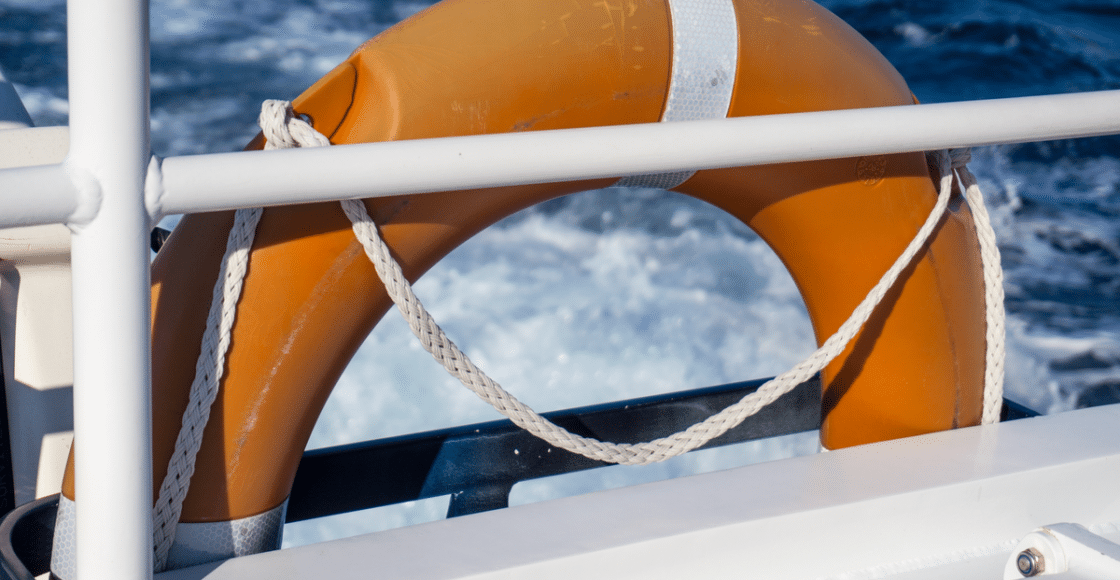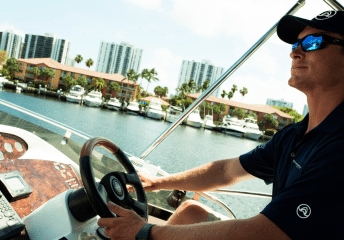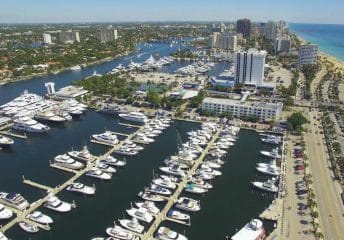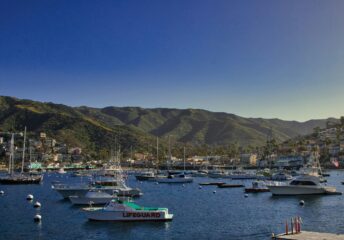Boating 101
Last Updated on September 29, 2023 by Boatsetter Team
If you are new to boating, you will notice a lot of new terminology and things that you must get your head around. It can be quite confusing at times to get used to it, but if you want to make boating a regular activity, then we’re afraid that you must.
In addition to all of the new terminology that you must learn, it is also important to familiarize yourself with all of the safety knowledge required should an incident happen on the water. To not be aware of the basic safety precautions could prove to be a fatal mistake. This is why we’ve put together this guide so that you can sail responsibly and fully enjoy the great gift that is boating.
Learning Boat Terminology
First of all, we’ll go through all of the necessary boating terminologies crucial to becoming a regular sailor. Yes, you may think at the beginning of reading that you can skip this part and see it as unimportant. But many of these terms can also be crucial to safety if you have to communicate what is wrong to a captain, a passenger, or if you have to call the U.S. Coast Guard. Also, if you don’t learn them, then you will be found out by your boating peers as being someone who has insufficient knowledge to run a boat or to make boating a regular hobby.
There are many different parts to a boat that you need to be familiar with. These are just as important as knowing your lefts and rights when you’re on the water. The boat’s bow is the front of the boat, where it often forms into a triangular shape. The stern is the rear of the boat, which is typically a more rectangular shape. When you are facing towards the bow, the lefthand side is called port which stems from this side being the one that we traditionally the part which would be on the side of the port when the boat was docked. This was due to the steering oar being on the boat’s righthand side, known as starboard.
Port-bow refers to the front left of the boat, and the port quarter specifies the rear lefthand side. Similarly, the starboard bowis the front righthand side, and the starboard quarteris the back right of the boat.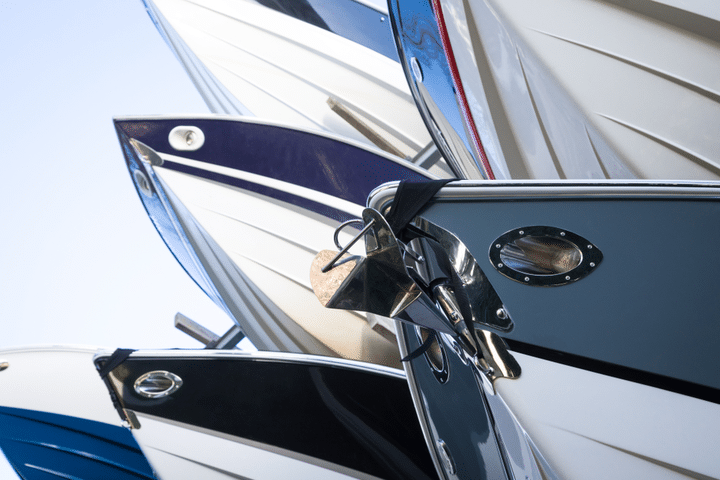
The other sections of the boat also have their specific names. The hull is the body and main structure of the boat built in a manner that allows it to float and drive through the water. This is essentially any part of the boat that you see when you look over the side of the boat. This includes the underlying side that is within the water. The other important location of the boat is the helm. This is the center point of the boat where it is steered from and is where you shall be if you are the one in control of the boat.
The other components of the boat that you should be aware of are the rudder and the screw. The rudder sits in the water at the stern of the boat and steers the boat left and right. The rudder is controlled either by hand when you sit at the rear of the boat if your boat has an outboard engine or by the wheel if it has an inboard engine. Outboard engines are detachable and are attached at the stern of the boat, and are typically controlled by hand with a throttle system like you would find on a motorbike. Inboard engines are fitted within the boat itself and are located at the bottom of the hull.
Distance Terminology
You should also be aware of the terms of distance when it comes to boating. The measure of distance is not in miles nor kilometers but in nautical miles, better known as knots. A knot is approximately 1.15 miles, so if your boat travels at 20 knots, it will go at 23 MPH. The other important unit of measurement in boating that isn’t typically used on land is a fathom, which is the equivalent of six feet.
Navigational Terms
Navigational terms are also very important and must be learned. The map displayed on your GPS is not known as a map and is instead known as a chart. Nautical charts are extremely detailed and should show you the depth of the water you are sailing in, the coastline, navigational hazards, and the flow of the currents and tide.
When you are looking at your nautical chart, you will notice the latitude and longitude. These are also essential terms. Latitude refers to north and south directions, while longitude coordinates head to the east and west. Longitude is measured from the Greenwich Royal Observatory, and it is the international prime meridian from where sailing coordinates are calculated.
Boating Safety Terms
Now that you’ve learned the terms for different parts of the boat, you should also familiarize yourself with some basic safety terms. When you are boating, various precautions must be taken to avoid disaster and keep yourself and other passengers safe on the water. The first step is to get to know the safety terminology, and then we recommend that you undertake a boating safety course.
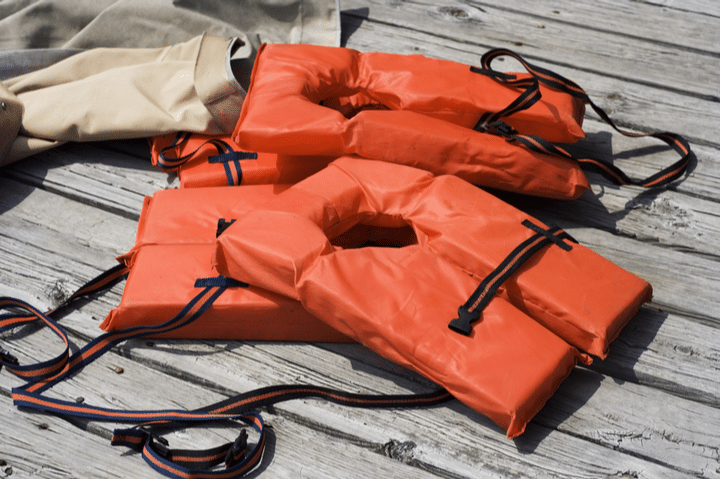
One of the terms you should know is a personal flotation device (PFD). If you end up in the water, these shall keep you afloat. The most common types are life jackets and life vests, but you should also have life rings stationed aboard your boat. These rubber rings are known as lifelines. They have a rope attached to them, and you throw them to someone who has ended up in the water in a man overboard incident.
You should also be aware of SOSsignals. When your boat is sinking or in danger of sinking or another grave problem onboard, you can send an SOS signal out to other boats in the area. Any boats nearby are obliged to inform the coastguard and approach the boat that has sent the signal to aid them. A visual distress signal (VDS)can also be used. This is often a flare that shoots a bright light followed by smoke into the air. If any boats are in the vicinity, they can approach the area where it was omitted from. These work better in the night as the flare illuminates the sky and can be seen from many miles away.
Rules on boating safety vary from state to state, so you should always double-check the requirements of the state that you’ll be sailing in before you head out. One of the basic catch-all rules is that the U.S. Coast Guard states that anyone younger than 13 must have a lifejacket available for them.
Safety checklist
There are various pieces of equipment that you should make sure are on board your vessel before you set out. If you are taking out a boat rental, then all safety gear should be on board, but you can always contact the owner for some peace of mind. Some of the items on the list below will be provided, but you may need to bring some the day you set sail.
- A throwable flotation device (rubber ring)
- Fire extinguisher
- Operable boat lights
- Extra batteries
- Flashlight
- Cell phone
- Updated maps
- Flares
- First aid kit
- Emergency whistle
- Non-slip boating shoes
- Extra sun protection – lotion, hats, and sunglasses
- Bottles of water
By including all of these items on board, you shall be far more prepared to handle a disaster than if you did not pack them.
Other Safety Tips
The amount of safety information that can be given when it comes to boating is immeasurable. So here are a few extra boating safety tips that we have consolidate together.
Check the Weather
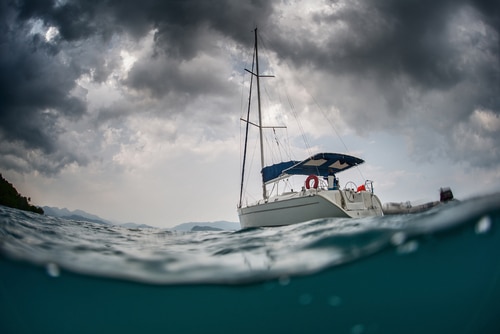
An important aspect of boating safely is to check the weather beforehand. Sometimes we know you want to book your boat rental far in advance, particularly in peak boating season. We strongly recommend that you do this in the summertime when it is consistently good weather, and there should be no problem sailing. Nevertheless, you should always check the weather a few days before and on the day that you head out onto the water.
Conditions on inland lakes are more consistent than when you’re on the sea. Even if the weather is bad, strong waves are not created, meaning that you are likely to be very safe onboard your boat. Also, winds are not as strong when you are inland, so navigation shall still be straightforward. Still, if it is raining when you are inland, you should pack a rainjacket and make sure that your shoes are anti-slip, which they should be regardless.
If you are out at sea, then the weather is a different story altogether. If a storm comes along, you need to be prepared for it or even cancel your trip if it is a strong one. If you are new to boating, then it is recommended that you only set off when the weather is pleasant to avoid getting into some tough conditions. It goes without saying that if a tropical storm such as a hurricane is due, you should stay at home and not even consider heading out onto the water.
Not only should you check the weather before you head out, but you should also keep a close eye out when you are on the water. Keep a keen eye out for storms on the horizon, and make sure that you keep up with radio updates transmitted for sailors. Your GPS should also display weather updates to keep you in the know. You should also try to know how tides and currents work and how they may affect your boat rental, particularly if the weather isn’t good.
Communication is Key
Communication is also key to boating safety. This is why we emphasized at the start of this blog post to learn all of the basic nautical terminologies. If you have to explain an issue to the captain, a crew member, or phone the coastguard, they can understand quicker and better if there is an urgent problem. For example, if you say ‘the boat is taking on water in the starboard quarter,’ they will know that water is coming in on the back righthand side of the boat. This will help them advise you on which part of the boat for you to wait in to be rescued and also influences from which side they approach you from boat or helicopter.
You should also be communicative with the owner of the boat. Keep in regular contact with them before the trip and make sure that they inform you about anything that you need to know. Make sure that you turn up early on the day that you take out the boat so that the owner or captain has the time to walk you around the boat and explain everything to you. Every boat is different, even if it’s the same category of the boat as another. By getting a walk around the boat, the captain can explain any intricacies that their particular one has. Maybe the steering is a bit stiff, or a ticking sound in the engine doesn’t indicate a problem.
As well as this, the owner or captain should explain to you where all of the safety equipment is. You should be aware of where the lifevests, PFD’s, and first aid kit are located. Try to memorize exactly where everything is so that if you have an incident on the water, you can react quickly without running around trying to locate everything required to deal with the incident.
Also, make sure that all of the friends joining you know and understand all of the safety rules so that you can all work together to keep each other safe. If one of them is acting dangerously, then be sure to warn them not to impede the safety of everyone. You should also communicate with friends and family on the shore. Let them know where you’ll be sailing and what time you expect to be back. This is particularly important if you are heading out solo.
Be Mindful of Other Boats
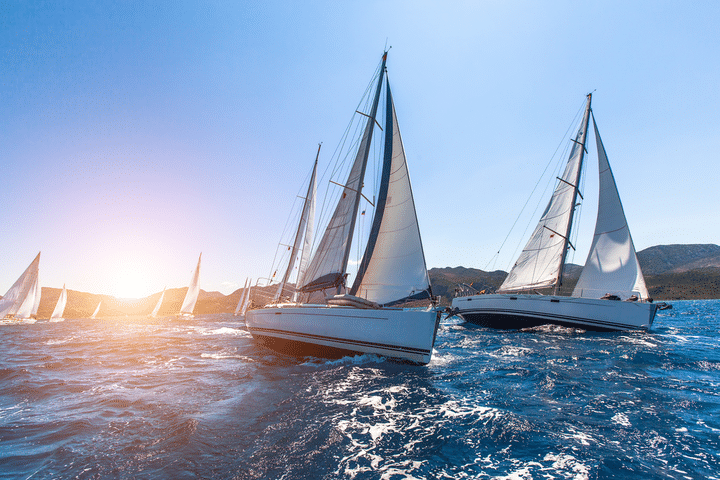
When you take out a boat rental, you likely chose a popular spot with plenty of options available, such as Orange Beach. You should always make sure that you are aware of the other boats in the vicinity. Ensure that you are always checking to see if there are boats in the area that you have plotted your course along. Boats can be in front of you before you know it, particularly speedboats and jet skis. With no brakes onboard, you need to slow your boat down before coming near to any boats.
You should also keep well away from larger crafts. If you are out on a dingy and come across a cruise liner, the drift coming from it could capsize you or drag your boat under. There is also a higher chance that bigger boats aren’t aware that you are there if you are close. So, keep your distance so that they can see you.
Here at Boatsetter, we want everyone to enjoy the water as much as we do. But to enjoy the water fully, you need to get up to speed with the terminology and safety advice to have a great time. If you don’t understand the terminology, you will struggle to understand the basic concepts of steering a personal watercraft or knowing how it works. If you are uneducated on it before starting, then it will only be an unenjoyable uphill struggle once you get onto the water. Instead, take some time to learn about boating and then put what you’ve learned into practice so that you can improve and become an all-around better boater.
We also recommend that you take a boating safety course before you get out onto the water. It shall reinforce what you learned here and give you a certificate to show to owners of future boat rentals to prove that you have boat safety knowledge. Also, check out this video for a visual guide to learn the parts of boats. So, get to the books and then get out and enjoy the water aboard a boat rental!
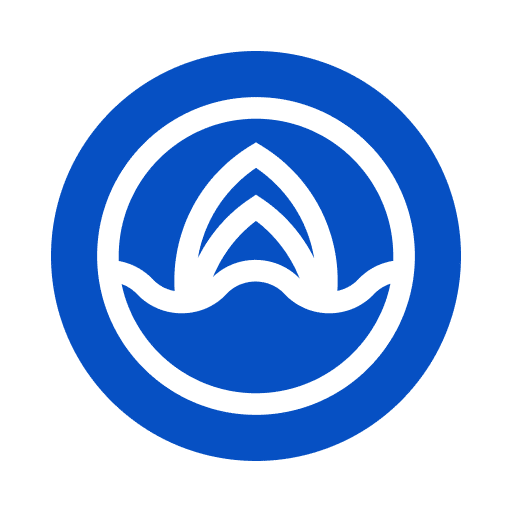
Boatsetter empowers people to explore with confidence by showing them a world of possibility on the water. Rent a boat, list your boat, or become a Boatsetter captain today.
